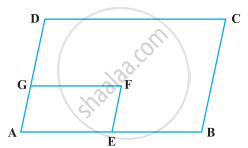Advertisements
Advertisements
प्रश्न
In the given figure, MP is the bisector of ∠P and RN is the bisector of ∠R of parallelogram PQRS. Prove that PMRN is a parallelogram.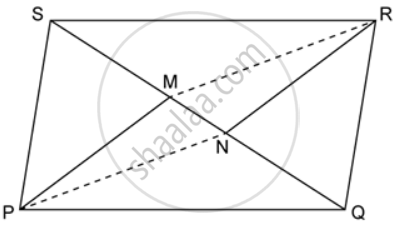
उत्तर
Construction: Join PR.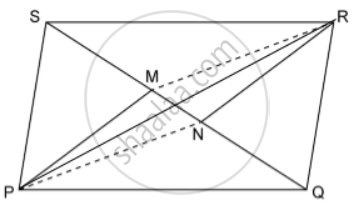
Proof:
∠QPM = `(1)/(2)∠"P"` ....(AP is the bisector of ∠P)
∠SRN = `(1)/(2)∠"R"` ....(RN is the bisector of ∠R)
⇒ ∠QPM = ∠SRN (i)....[∠P =∠R (Opposite angles of a parallelogram)]
Now, ∠QPR = ∠SRN (ii)....[Alternate angles since PQ || SR)
Subtracting (ii) from (i), we get
∠QPM - ∠QPR = ∠SRN - ∠SRP
⇒ ∠RPM =∠PRN
⇒ PM || RN ...(Alternate angles are equal)
Similarly, RM || PN
Hence, PMPN is a parallelogram.
APPEARS IN
संबंधित प्रश्न
The diagonal BD of a parallelogram ABCD bisects angles B and D. Prove that ABCD is a rhombus.
The alongside figure shows a parallelogram ABCD in which AE = EF = FC.
Prove that:
- DE is parallel to FB
- DE = FB
- DEBF is a parallelogram.
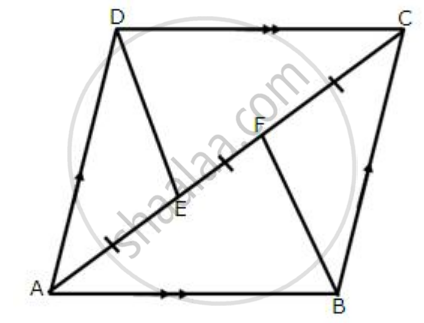
Points M and N are taken on the diagonal AC of a parallelogram ABCD such that AM = CN. Prove that BMDN is a parallelogram.
PQRS is a parallelogram. T is the mid-point of PQ and ST bisects ∠PSR.
Prove that: QR = QT
ABCD is a parallelogram. The bisector of ∠BAD meets DC at P, and AD is half of AB.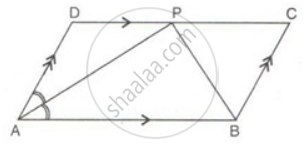
Prove that: ∠APB is a right angle.
In a parallelogram ABCD, E is the midpoint of AB and DE bisects angle D. Prove that:CE is the bisector of angle C and angle DEC is a right angle
In the Figure, ABCD is a rectangle and EFGH is a parallelogram. Using the measurements given in the figure, what is the length d of the segment that is perpendicular to `bar("HE")` and `bar("FG")`?
Which of the following statement is correct?
In the following figure, it is given that BDEF and FDCE are parallelograms. Can you say that BD = CD? Why or why not?
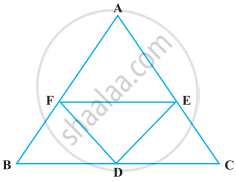
In the following figure, ABCD and AEFG are two parallelograms. If ∠C = 55º, determine ∠F.
